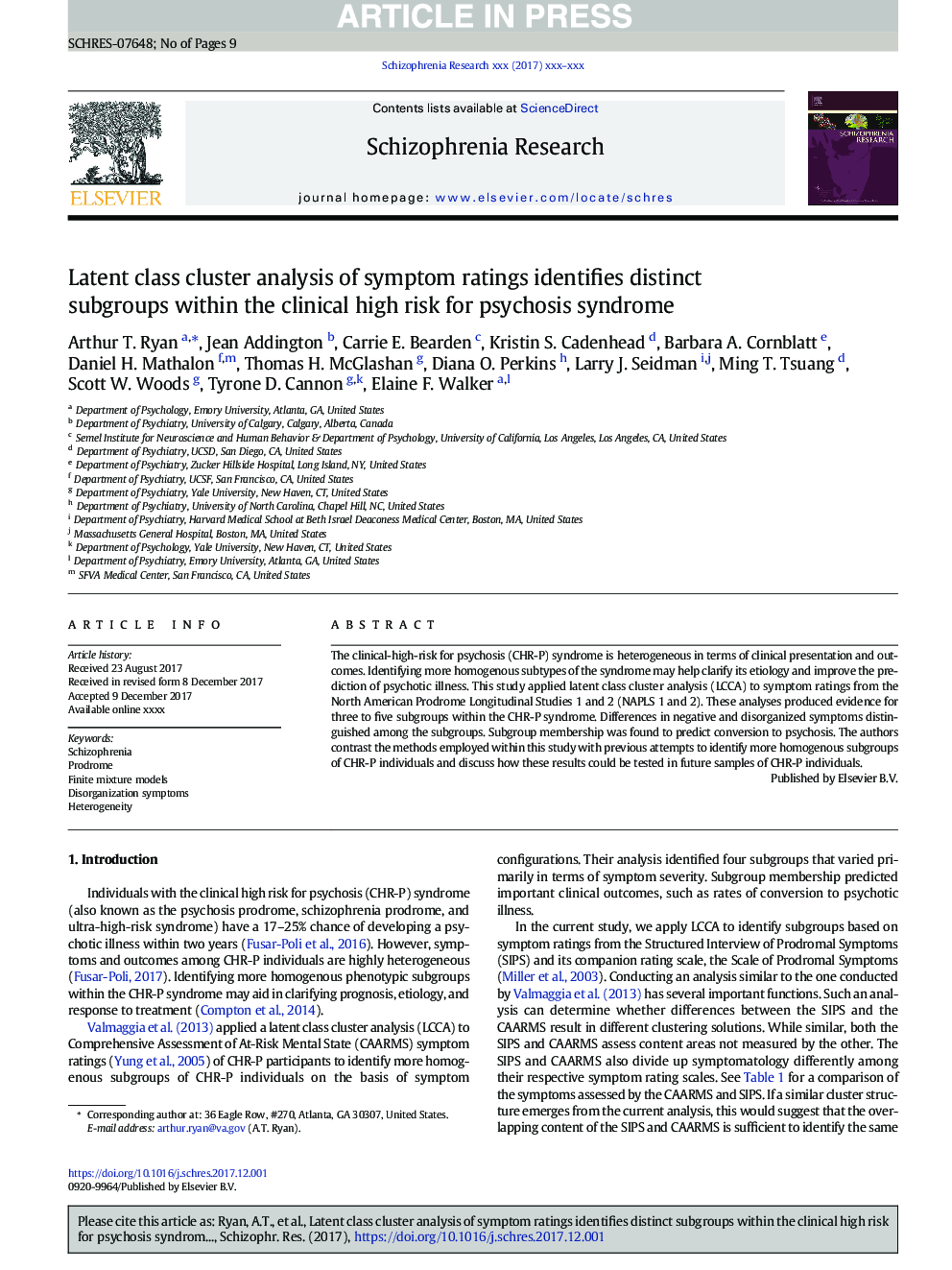| Article ID | Journal | Published Year | Pages | File Type |
|---|---|---|---|---|
| 6821008 | Schizophrenia Research | 2018 | 9 Pages |
Abstract
The clinical-high-risk for psychosis (CHR-P) syndrome is heterogeneous in terms of clinical presentation and outcomes. Identifying more homogenous subtypes of the syndrome may help clarify its etiology and improve the prediction of psychotic illness. This study applied latent class cluster analysis (LCCA) to symptom ratings from the North American Prodrome Longitudinal Studies 1 and 2 (NAPLS 1 and 2). These analyses produced evidence for three to five subgroups within the CHR-P syndrome. Differences in negative and disorganized symptoms distinguished among the subgroups. Subgroup membership was found to predict conversion to psychosis. The authors contrast the methods employed within this study with previous attempts to identify more homogenous subgroups of CHR-P individuals and discuss how these results could be tested in future samples of CHR-P individuals.
Related Topics
Life Sciences
Neuroscience
Behavioral Neuroscience
Authors
Arthur T. Ryan, Jean Addington, Carrie E. Bearden, Kristin S. Cadenhead, Barbara A. Cornblatt, Daniel H. Mathalon, Thomas H. McGlashan, Diana O. Perkins, Larry J. Seidman, Ming T. Tsuang, Scott W. Woods, Tyrone D. Cannon, Elaine F. Walker,
